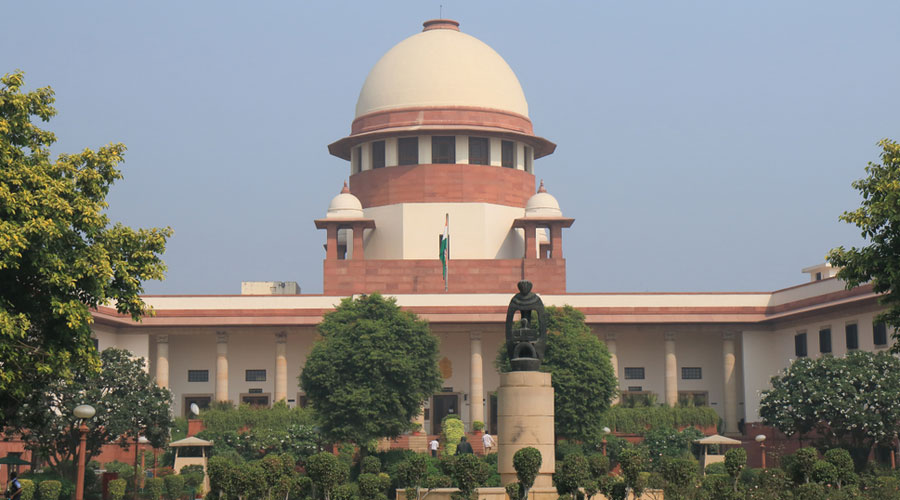The government has moved to regulate content on video streaming platforms such as Amazon Prime Video and Netflix besides online news portals, rejecting a code of self-regulation that 15 OTT platforms had signed in September.
The audiovisual content of over-the-top (OTT) apps, and news and currentaffairs content on online media have been brought under the ambit of the information and broadcasting ministry.
The decision has raised fears of “a licence raj on the Internet”.
It has also prompted calls for a “liberal approach” from the Centre, while some have expressed hope that fake news would now be weeded out.
In a gazette notification by the cabinet secretariat on Monday, the President amended the Government of India (Allocation of Business) Rules, 1961, to bring about the change.
No reason was provided, and I&B minister Prakash Javadekar refused to answer questions at the briefing, saying he would speak on the subject on Thursday.
The government had revealed its intent earlier in the Supreme Court during hearings in the Sudarshan TV case, when it argued the court should first focus on digital media rather than television content.
The government has been particularly focused on online news portals, having been unable to control the digital media the way it has television and print.
Earlier this year, the Vishwa Hindu Parishad had written to Netflix complaining that some of its programmes had hurt Hindu sentiments. It had named five movies and web series: Leila, Ghoul, Chippa, Sacred Games and Krishna & His Leela.
In the Sudarshan TV case, the government had said: “It is the need of the hour that the court start first with ‘web-based digital media’ which includes ‘web magazines’ and ‘web-based news channels’ and ‘web-based newspapers’. They not only have a very wide reach but are completely uncontrolled.”
The print media is regulated by the Press Council of India with the stated objective of “preserving the freedom of the press” and it has representation from the media. Television has a self-regulatory mechanism in the News Broadcasters Standards Authority.
However, the government has rejected the self-regulation code for Online Curated Content Providers in India, which was signed by 15 video streaming platforms including Amazon Prime Video, Netflix, Zee5, Viacom 18, Disney Hotstar, MX Player and Jio.
Unveiled by the Internet and Mobile Association of India (IAMAI) on September 4, the code sought to provide consumers with information and tools to help them decide what they wanted to see while allowing the content creators freedom to tell their stories.
“By aiming to do what is best for both consumers and creators as guiding principles, the code intends for India to be one of the most dynamic and fastest growing entertainment industries in the world,” the IAMAI had said.
The code provided for a framework for age classification and content descriptions for titles as well as access control tools, and a structured grievance redress and escalation mechanism for complaints of non-compliance with the guidelines.
It made it mandatory for each OTT platform to set up a consumer complaints department and/or an internal committee and an advisory panel with an independent external adviser.
Contacted by this newspaper for comments, an authorised representative of the IAMAI said: “We are not commenting on this issue.”
Netflix declined comment while Amazon and Hotstar did not respond to requests for comment, a Reuters report said.
Facebook and Twitter, whose news and current affairs content will come under the new regulatory regime, did not answer requests for comment, either, the report added.
Karan Bedi, CEO of MX Player, told The Telegraph: “We look forward to working with the ministry to implement our industry’s self-regulation efforts. As responsible content creators, we want to ensure this act not only takes cognisance of the nature of content being released but also ensures that we safeguard creativity in this rapidly growing sector.”
While actor Ashwin Mushran tweeted “the government just went OTT on OTT”, Aneesh Dev, founder-director of Dollywood Play — a dubbed Hindi film OTT — sought a “liberal approach” to regulating content.
“The government should keep in mind the international standards in developed countries for allowing content, as there are millions of videos for which these platforms need to get scrutinised and seek necessary approvals. Hence there can be a more liberal approach of allowing content for an emerging medium like OTT.”
Filmmaker Vikram Malhotra said the industry would have to “wait and watch”.
“My only concern is that rules that currently govern access to content as well as its creation and distribution on other platforms cannot and should not be simply applied to the online medium,” said Malhotra, whose studio Abunduntia Entertainment produces films and shows, including some for Amazon Prime Video.
Long build-up
The government move comes after the Supreme Court issued a notice last month to the Centre and the IAMAI on a petition from an advocate, Shashank Shekhar Jha, seeking an autonomous body to monitor and filter content on OTT platforms.
Soon after the Supreme Court notice, the I&B ministry wrote to the IT ministry to explore ways of regulating online content.
The Modi government had been scouting for ways to regulate OTT apps for several years.
In March 2015, telecom regulator Trai had sparked outrage by floating a consultation paper that wondered if it was time to regulate OTT applications — especially communications apps — since they had started to hurt the revenues of telecom services whose networks they rode. The move fizzled out soon after.
In mid-September this year, Trai told the telecom department there was no need to bring OTT platforms under any form of regulatory framework.
“Any regulatory prescription in haste may leave an adverse impact on the industry as a whole. The authority is of the opinion that market forces may be allowed to respond to the situation without prescribing any regulatory intervention,” Trai said.
“However, developments shall be monitored and intervention as felt necessary shall be done at appropriate time.”
The latest move to regulate OTT content is a lot more sinister than the original intent.
“It is a little like a licence raj on the Internet,” said cyber law expert Prashant Mali.
However, another cyber law expert, Karnika Seth, cautiously welcomed the plan, saying: “It will weed out fake news.”
She did not explain what litmus test should be used to identify fake news.
“What kind of licensing will apply to OTT film and other providers will need to be looked into because it should not impinge on freedom of speech, yet regulate only to the extent it is necessary,” Seth said.
She conceded that implementation could prove a challenge. In cinemas it’s possible to exclude certain categories of viewers, but the online platform is more open and everybody has the right to access it.
“Does somebody have to prove their age to view a programme? How feasible this would be is yet to be seen,” she said.
Sajai Singh, a partner at the law firm J. Sagar Associates, said: “Our hope is that the ministry of I&B will consider the recommendations made by the expert committee chaired by Shyam Benegal while trying to formulate the guidelines and procedure for certification of content on OTT platforms.”
The Benegal committee, dealing with film certification, had in 2016 said the State would have to shift from the idea of censorship to that of certification.
Singh said: “One key differentiator of the digital medium is the lack of public exhibition of content; rather, there is a pull factor wherein the consumer decides what content he or she wants to consume, at what time and after paying a transaction value. It is imperative that the industry is allowed to flourish and grow in a uniform, non-discriminatory and non-discretionary manner.”
Additional reporting by Reuters













